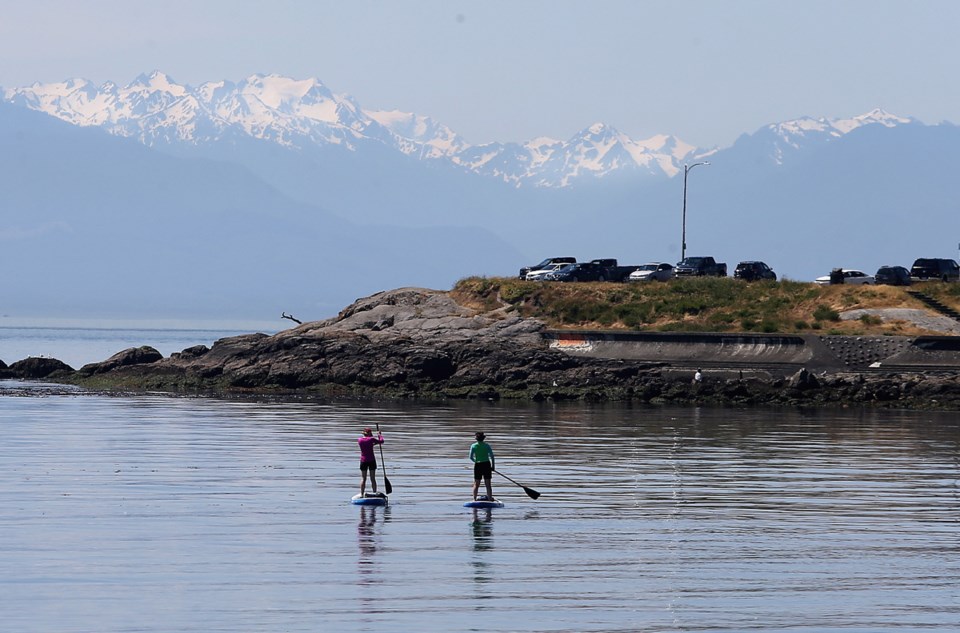A commentary by a local historian.
Clover Point, the most spectacular point on the Dallas Road waterfront, is dominated by cars. There is no safe pedestrian walkway around the park. The popular Dallas Road waterfront pathway ends ignominiously at the Clover Point loop road. After that, walkers must weave dangerously around and between moving and parked cars.
Victoria Coun. Ben Isitt recently proposed transforming the park into a people-friendly green space. Isitt is not the first councillor to advocate it.
In 1992, Coun. Geoff Young proposed restricting vehicles in order to create a safer, pedestrian-friendly Clover Point. Young was still in favour of that idea in 2005 when he wrote, “Walking out on Clover Point on a stormy night could be a magical experience if it were not dominated by car motors and lights, as it is now.”
Young and Isitt often disagree, but I hope they will work together on this issue.
Clover Point used to be a beautiful place. When James Douglas landed there in 1842, he waded knee-deep through clover, tall grasses and ferns. He named the point for its dominant feature: acres of showy, luxuriant red clover.
Looking south from the point today, visitors see the same outstanding view of the Strait of Juan de Fuca and distant Olympic Mountains that Douglas admired. But not one clover plant remains.
Project after project devastated the point.
In 1900, the military created the Clover Point Rifle Range and cut off public access for 30 years. Huge mounds of dirt were piled up to absorb lead bullets and concrete bunkers were constructed. Men lay on the bluff near Cook Street facing southeast to shoot long distance at targets on the point. When the range finally closed in 1931, it was a multi-year city project to remove earthworks loaded with 30 years' accumulation of lead bullets, dismantle old bunkers and clear piles of old cars and fences.
During the Second World War, the military took over the point again. Soldiers were stationed there to man two giant searchlights. Six barracks buildings were constructed and a mess hall.
The first sewer line and outfall pipe was laid in 1892; an outfall has been there ever since. In 1977, the first huge pumping station was constructed and currently another sewage construction is underway.
Clover Point Park is a favourite destination for birdwatchers, storm watchers, kite flyers, hikers, bikers and anyone who loves great views. Creating a more safe, people-friendly space to enjoy all those activities is long overdue.



